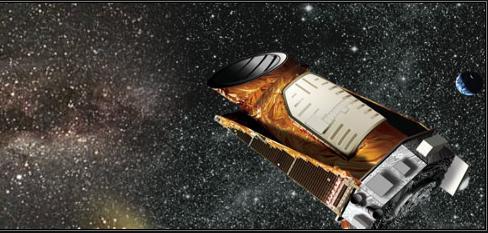The challenge now is to find planets similar to the Earth, that is, those with a diameter half to twice that of the Earth, in particular those that are in the habitable zone around their star - a place where liquid water can exist, and possibly even life

The centuries-long search for Earth-like planets has been constantly boosted by the enormous excitement and public interest surrounding the discovery of hundreds of planets orbiting other stars in the last decade and a half.
This morning (Saturday) at 05:49 Israel time, NASA's Kepler satellite was launched from Cape Canoeville into orbit around the Earth with the sole purpose of exploring one area in space for 3.5 years to find planets that cause an eclipse of their star. For this it is necessary to look at each star for a long period of time and constantly measure the intensity of its light.
There is clear evidence that a considerable number of planets of three types exist in the universe: gas giants, super-Earths orbiting their suns in close orbits, and gas giants.
The challenge now is to find planets similar to the Earth, that is, those with a diameter half to twice that of the Earth, in particular those that are in the life zone around their star - a place where liquid water can exist, and possibly even life.
The Kepler mission, NASA's tenth discovery mission, was specifically designed to scan our region for the Milky Way and discover hundreds of Earth-sized and smaller planets in or near habitable zones and to determine how many of the billions of stars in our galaxy hold solar systems with such planets. The results of the mission will allow us to place our solar system within the continuum of solar systems in the galaxy.
The scientific purpose of the Kepler mission is to study the structure and diversity of solar systems. This will be achieved by surveying a large sample of stars with the aim of doing the following:
- To determine the proportion of terrestrial and larger planets that are in or near the habitable zones around a wide variety of stars.
- Determine the distribution, sizes and shapes of the orbits of these planets.
- Estimate how many such planets exist in multiple star systems.
- To determine the range of orbital sizes and light reflectance as well as the sizes, masses and densities of gas giants orbiting their Sun at a short distance.
- Identify additional planets in any system that will be discovered using other techniques.
- Determine the properties of the stars that are surrounded by planets.
see also

12 תגובות
Walhemichal you are right!
Hanan:
You seem to be confused.
The one who underestimates others is actually fresh, and he doesn't underestimate only one scientist but the vast majority of scientists and presents a presentation as if he knows that there is no chance of finding a planet populated by intelligent beings.
In other words - like you - he also claims to know what he doesn't know, but surprisingly, his knowledge is the opposite of yours.
That's why - of all people - you would have dismissed his words if you had read them and not focused on looking for a reason to attack me.
I didn't invalidate the content of his words (because, as mentioned, I don't know) but the disdain he expressed towards others.
There are always righteous people in Sodom Michael...
Galileo was also laughed at, Copernicus was laughed at, Darwin was slandered, Champollion was banished, Zemlweis was thrown out, etc.
The fact that a mainstream of scientists make a decision and based on them will do nothing, does not mean that they are right. History is full of such cases.
The same goes for the argument you raised, that no one knows if there is or isn't complex life outside the Earth. An argument that I, for example, completely disagree with, if only for the simple reason that, in my opinion, it is an argument that is not based on actual data.
Therefore, I would not dismiss any argument put forward even by a single person... sometimes it turns out that he was the one who was right.
Hanan Sabat
http://WWW.EURA.ORG.IL
I'm also impatiently waiting for the results... although with the method he uses to find stars, I don't think he'll find too many..
fresh:
So there are two scientists who think differently than most scientists.
Is this a reason to think that these two are right?
All in all - no one knows whether or not there is complex life outside the earth and if we were to base science on pessimism (as you suggest) he would not have taken even one step.
Besides - locating life-supporting planets serves other purposes besides that of finding intelligent life (after the hope of finding such on Earth has almost given up).
What is this long article, just explain briefly.
It's a shame for NASA's effort and see a link on the subject:
http://www.haayal.co.il/story?id=764&NewOnly=2&LastView=2009-03-07%2010:31:21
age
Where exactly do you click to get the presentation itself?
http://kepler.nasa.gov/ed/ppt/
A presentation explaining the telescope and the mission
Just a fact that readers should consider:
For every planet that can be discovered from the Earth region in this way, there are more than 150 that cannot be discovered this way because we are not close enough to their milka plane (simply a matter of angle calculations).
If the observed area is inside our galaxy the chances are probably higher.
They did not give full details: what is the size of Kepler? How far is it from the earth? How long has the plan to launch it been delayed? (Nevertheless... she probably delayed) How much money was invested in the project and how much more will be invested?
Eagerly awaiting the findings of the telescope.